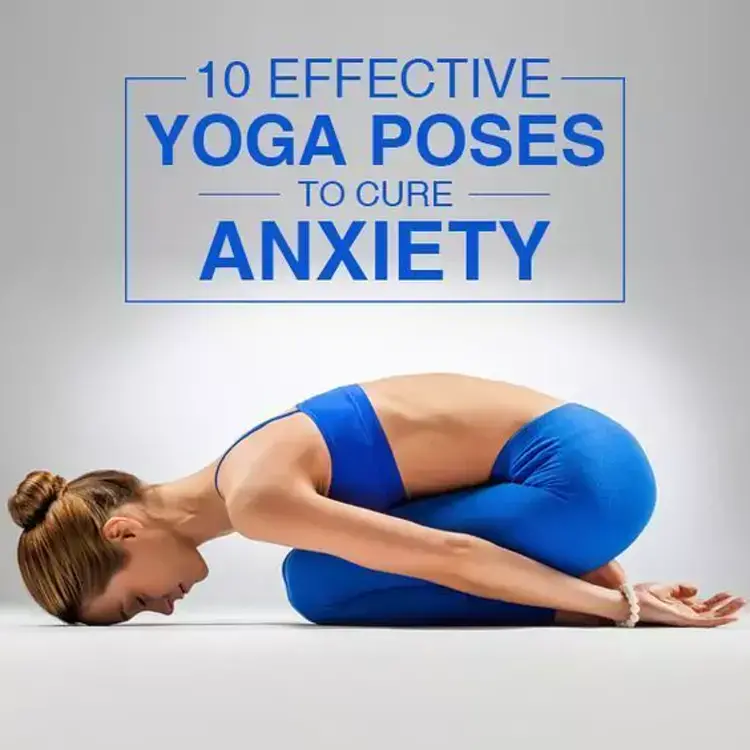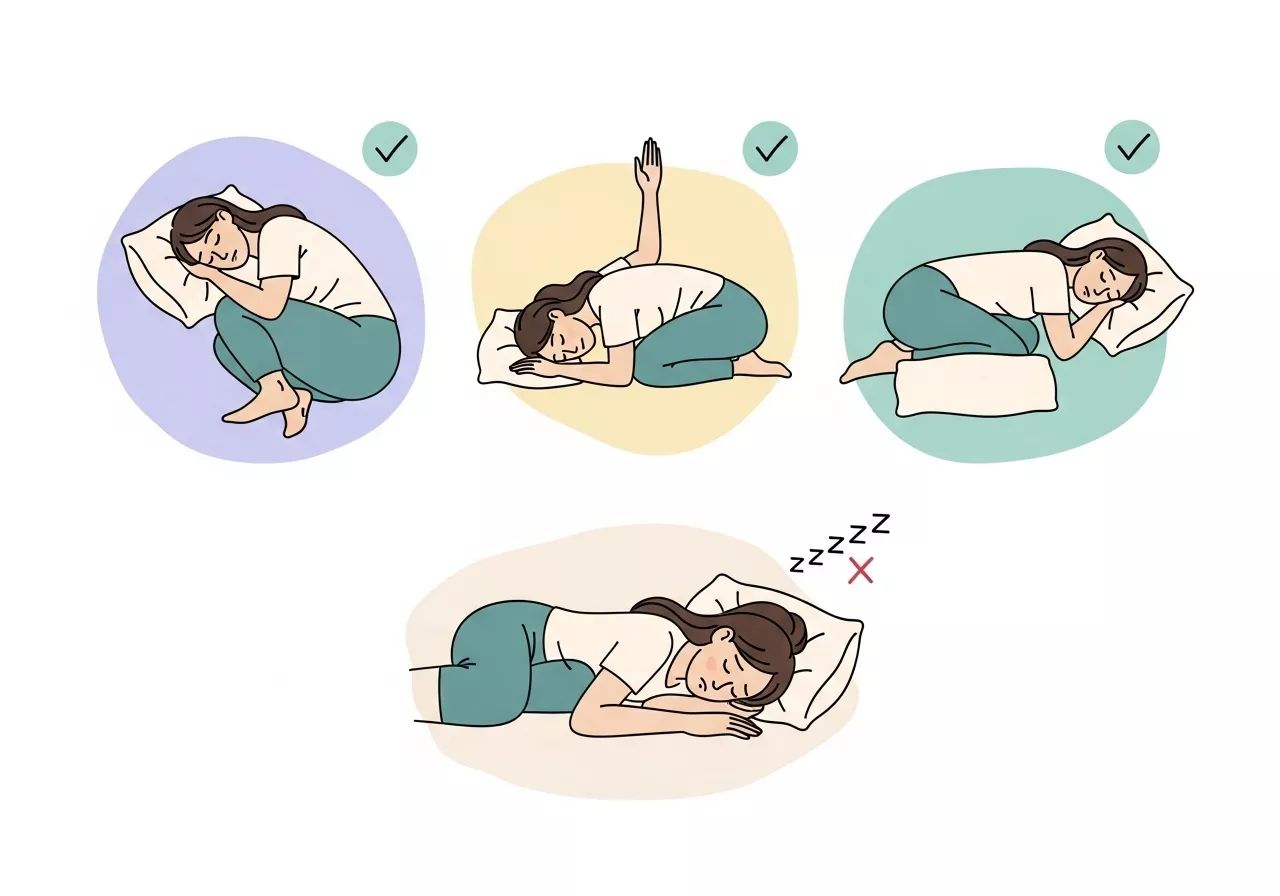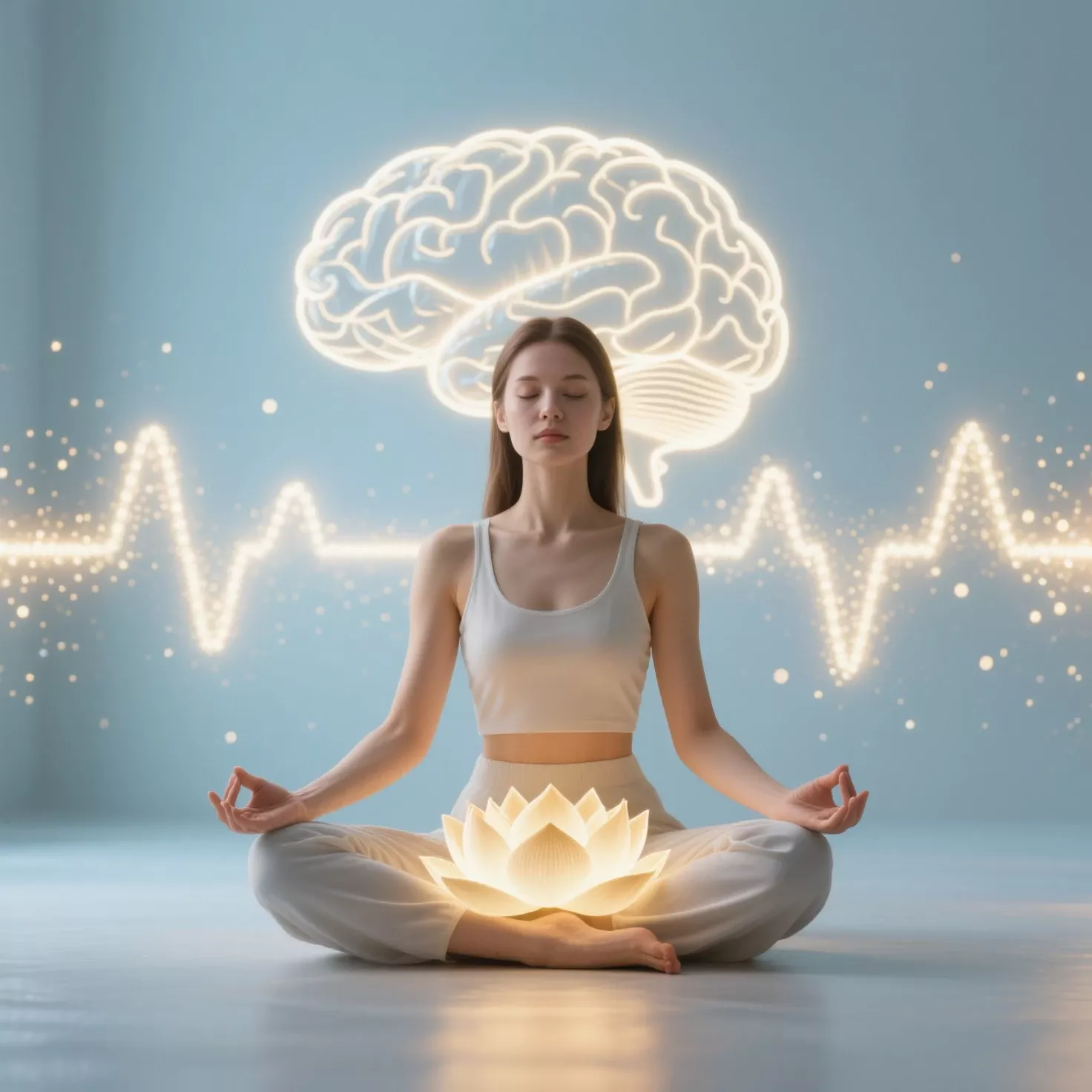Anxiety can take a toll on your mental and physical well-being. Yoga offers a holistic way to calm the mind and strengthen the body by enhancing mindfulness and reducing stress hormones.

Below are 10 yoga poses you can incorporate into your daily routine to help manage anxiety effectively.
Top 10 Yoga Poses to Relieve Anxiety and Stress
1. Child’s Pose (Balasana)
Benefits: Relaxes the lower back, gently stretches the spine, and reduces tension in the hips. This pose fosters a sense of safety and grounding.

How to Do:
- Kneel on the floor, touching your big toes together and sitting back on your heels.
- Spread your knees apart to a comfortable width.
- Stretch your arms forward on the mat, allowing your forehead to rest down.
- Take deep breaths, focusing on your inhale and exhale, for 30–60 seconds.
2. Cat-Cow Pose (Marjaryasana-Bitilasana)
Benefits: Relieves tension in the spine and encourages gentle movement, enhancing body awareness. It also helps regulate your breathing.
How to Do:
- Start on all fours, ensuring your wrists are aligned under your shoulders and knees under your hips.
- Inhale deeply, arching your back and lifting your head and tailbone (Cow Pose).
- Exhale, rounding your spine, tucking your chin, and pulling your belly toward your spine (Cat Pose).
- Repeat for 1–2 minutes.
3. Bridge Pose (Setu Bandhasana)
Benefits: Opens up the chest, improves blood flow to the brain, and alleviates anxiety by calming the nervous system.

How to Do:
- Lie on your back with knees bent and feet flat on the floor, hip-width apart.
- Press your palms into the mat alongside your body.
- Slowly lift your hips toward the ceiling, engaging your core and thighs.
- Hold for 15–30 seconds, then lower back down.
4. Standing Forward Bend (Uttanasana)
Benefits: Encourages blood flow to the brain, reduces fatigue, and helps release tension in the back, neck, and hamstrings.

How to Do:
- Stand tall with feet hip-width apart.
- Exhale and hinge forward at your hips, letting your upper body hang down naturally.
- Keep your knees slightly bent if needed, and rest your hands on the floor or your shins.
- Stay for 30 seconds, breathing deeply.
5. Camel Pose (Ustrasana)
Benefits: Opens the chest and heart, countering the effects of anxiety by releasing pent-up emotions. It also improves posture.

How to Do:
- Kneel with your knees hip-width apart and hands on your lower back.
- Lean backward, lifting your chest and reaching for your heels one hand at a time.
- Keep your neck relaxed and hold for 10–20 seconds.
6. Seated Forward Bend (Paschimottanasana)
Benefits: Stretches the lower back and hamstrings, calming the nervous system and encouraging relaxation.

How to Do:
- Sit with your legs extended straight.
- Inhale, lengthen your spine, and exhale as you fold forward from your hips.
- Reach for your feet, ankles, or shins, keeping your back straight.
- Hold for 30 seconds to 1 minute, breathing deeply.
7. Tree Pose (Vrikshasana)
Benefits: Improves balance, focus, and concentration, providing a calming effect on the mind.

How to Do:
- Stand tall and shift your weight onto one leg.
- Place the sole of your other foot against your inner thigh or calf (avoid the knee).
- Bring your hands to a prayer position at your chest or overhead.
- Hold for 30 seconds, then switch sides.
8. Corpse Pose (Shavasana)
Benefits: Promotes full-body relaxation, mindfulness, and stress release, making it ideal for winding down.

How to Do:
- Lie flat on your back with arms relaxed by your sides and palms facing upward.
- Close your eyes, focusing on your breathing and releasing tension from each part of your body.
- Stay for 5–10 minutes.
9. Eagle Pose (Garudasana)
Benefits: Improves circulation and balance while stretching the shoulders and thighs, releasing pent-up tension.

How to Do:
- Stand tall and bend your knees slightly.
- Cross one leg over the other, tucking your foot around the opposite calf.
- Cross one arm under the other, bringing palms together.
- Hold for 20–30 seconds, then switch sides.
10. Legs-Up-The-Wall Pose (Viparita Karani)
Benefits: Reduces fatigue and swelling in the legs, calming the mind by lowering the heart rate.

How to Do:
- Sit beside a wall and swing your legs up, lying back onto the floor.
- Adjust your position until your hips are close to the wall.
- Relax your arms at your sides and stay in this pose for 5–10 minutes.
Each of these poses helps you find balance between body and mind, creating a safe and calming space to manage anxiety.
Incorporating them into your routine can have a profound impact on your overall well-being.
How Yoga Helps with Anxiety
Yoga is a powerful practice for reducing anxiety by creating harmony between the body and mind. Here’s how it works:
- Activates the Parasympathetic Nervous System: Yoga focuses on deep breathing and mindful movements, activating the “rest and digest” response. This reduces cortisol levels (the stress hormone), calming the body.
- Promotes Mindfulness: By concentrating on the present moment through postures and breathwork, yoga decreases racing thoughts and overthinking.
- Regulates Emotions: Yoga enhances the release of endorphins and serotonin, boosting mood and alleviating anxiety symptoms.
- Improves Sleep Quality: Restorative poses like Shavasana help quiet the mind, facilitating deeper and more restorative sleep.
- Enhances Body Awareness: Practicing yoga connects the mind with the body, allowing you to identify and release stored tension.
- Builds Resilience to Stress: Regular practice helps build mental and physical resilience, improving your ability to handle anxiety triggers.
Incorporating yoga into your daily life can significantly improve mental clarity, emotional balance, and overall well-being.
Detailed Tips for Practicing Yoga for Anxiety
- Create a Comfortable Space
Set up a calm, clutter-free area with soft lighting and minimal distractions. Use a yoga mat, cushions, or blankets for added comfort. - Focus on Breathing
Deep, rhythmic breathing enhances relaxation and amplifies the benefits of yoga. Practice pranayama techniques like alternate nostril breathing for calming effects. - Start with Gentle Poses
Begin with basic poses like Child’s Pose or Legs-Up-The-Wall to ease your body into a relaxed state. Avoid pushing yourself into discomfort. - Incorporate Guided Sessions
Use apps, videos, or attend classes led by certified instructors, especially if you’re new to yoga. - Be Consistent
Dedicate 15–30 minutes daily to your practice. Over time, this consistency builds a deeper sense of peace and mindfulness. - Listen to Your Body
Respect your limits. If a pose feels uncomfortable or causes strain, modify it or switch to a restorative posture. - Pair Yoga with Meditation
After your practice, spend 5–10 minutes meditating to enhance mental clarity and reduce anxiety. - Combine with Aromatherapy
Use calming scents like lavender or chamomile during your yoga sessions to create a relaxing atmosphere. - Journal Your Experience
Reflect on how you feel before and after practicing yoga to track progress in managing anxiety. - Practice Gratitude
End your session by acknowledging the time you dedicated to self-care. This reinforces a positive mindset and encourages regular practice.
Yoga, when practiced with intention and care, can be a transformative tool for managing anxiety and nurturing inner peace.




